
by successfulbob | Guest Post, marketing, Marketing Monday, photography
Giving Back – Maketing Monday
by Skip Cohen
Giving Back
It’s probably ten years ago I wrote my first post about giving back to the community. It’s such an important part of building your brand that it deserves to be at the very top of your priority list. As business picks up in the fourth quarter, you need to make sure you don’t lose sight of how much it can help you build your reputation.
 Helping Hand Graphic – Bob Coates Photography
Helping Hand Graphic – Bob Coates Photography
Years ago I had the opportunity to hear Jay Conrad Levinson speak. Known best as the originator of the expression “Guerilla Marketing”, he talked about the top 100 things Guerilla Marketers need to do. At the very top of the list was “be involved in your community and charities”. Why? Because, people like to buy products from companies they perceive as giving back.
It’s cause-related marketing at its best and it helps build your brand beyond just being a photographer. Let’s face it, you’re looking for the community to be good to you. So, what are you doing to be good to your community?
Finding a charitable cause in your community couldn’t be easier, but you have to take the time. Just read the local paper. What’s going on in your community? If the school tax bill didn’t pass, then the arts are going to suffer, starting with the yearbook, photo club, newsletter etc. All, perfect matches for you to lend a hand as a professional photographer.
Is there an event coming up that might need your skills as a photojournalist? Everything from a walkathon to organizations like Kiwanis, Rotary, Lions and Exchange Club all have a major charity drive each year.
Check with your local hospital, police force, fire-fighters – they always need help and they always have an event they’re sponsoring. Then there are great organizations like Big Brother and Big Sister.
Within the photographic community, there’s NILMDTS (Now I Lay Me Down To Sleep), Thirst Relief, HeartsApart.org and the Josephine Herrick Project. These are just a handful of non-profits as examples. They all involve photographers and are dedicated to helping make the world a better place.
Although no longer serving let’s not forget PPA Charities, founded over fifteen years ago by Bert Behnke. I’m proud to have been one of the original members of the team along with Helen Yancy, Steve Troup, Dennis and Lori Craft, just to name a few.
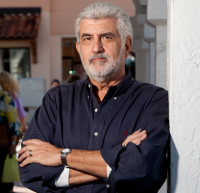 Skip Cohen has been involved in the photographic industry his entire career and previously served as President of Rangefinder/WPPI and earlier, Hasselblad USA. He founded SkipCohenUniversity.com in 2013. Skip is a co-host for “Mind Your Own Business” and “Beyond Technique,” webcasts through Photofocus.com, writes for several publications including Shutter Magazine and is actively involved in several advisory boards for non-profit organizations.
Skip Cohen has been involved in the photographic industry his entire career and previously served as President of Rangefinder/WPPI and earlier, Hasselblad USA. He founded SkipCohenUniversity.com in 2013. Skip is a co-host for “Mind Your Own Business” and “Beyond Technique,” webcasts through Photofocus.com, writes for several publications including Shutter Magazine and is actively involved in several advisory boards for non-profit organizations.
by successfulbob | Marketing Monday, photography, photography marketing
Marketing Monday – with Skip Cohen
Here’s another good review of things that you should be thinking about from my buddy Skip.
Making Assumptions
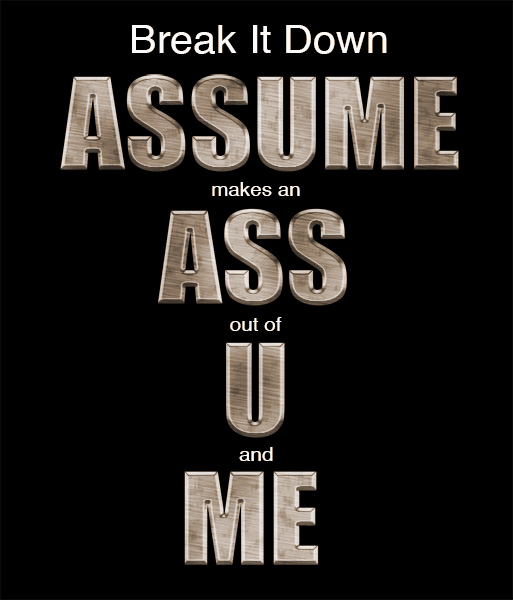 We all make assumptions, some more than others. We do it in our personal lives, business, on events for the future and decisions from the past. The big question is, why don’t we ever just talk to the people involved instead of coming to our own, often misguided assumptions?
We all make assumptions, some more than others. We do it in our personal lives, business, on events for the future and decisions from the past. The big question is, why don’t we ever just talk to the people involved instead of coming to our own, often misguided assumptions?
Wandering through cyberspace a couple of years ago I found this on a site by Ken Lahuer:
“We have a tendency to make assumptions about everything. The problem with making assumptions is that we BELIEVE they are the truth. We make assumptions about what others are doing or thinking, we take it personally, and then we blame them and react by sending emotional poison with our word.
We only see what we want to see and hear what we want to hear. We don’t perceive things the way they are; we dream things up in our imagination. Because we are afraid to ask for clarification, we make assumptions that we believe are right, then we defend our assumptions and try to make others wrong.”
The photo industry is loaded with people who have turned assumption-drawing into an art form, and so often they’ve assumed wrong! I’ve heard stories about major companies in trouble, cameras being discontinued, even people being let go. I’ve heard stories so severe had they been more widespread, the companies involved would have actually seen a drop in sales.
Then there are the personal stories that run through our industry. Assumptions are drawn over why somebody left a company, why a new product was late for introduction, why a policy was changed, and the list goes on and on. Assumptions are drawn, then they hit the rumor mill and suddenly they’re FACT – and not once does anybody along the way stop and call the people involved for verification.
Last on the list are those of you who draw the wrong assumptions about your clients. You don’t ask the right questions and too often stereotype their behavior. Here’s a prime example of drawing the false impression at the retail level.
I was in my early fifties when I decided I wanted to buy a Corvette. I’d always wanted one, and the kids were adults, out of the house, and it seemed like great timing. I was in an old pair of shorts, and a t-shirt when I wandered into the showroom at the Chevy dealer in Morristown, NJ. I picked up all the brochures, spent time sitting in one that was in the showroom, looked at a few in the lot and not one person waited on me. There were easily six salesmen working, and no one came over to help me.
After twenty minutes or so, I walked into the middle of the showroom and announced,
“I honestly thought you guys were smart enough to recognize a guy in mid-life crisis ready to buy his first Vette. None of you are that smart, and I’m leaving now to drive to another dealership, and by the end of the day, my new Vette will be ordered. You guys need to work on your selling skills!”
They all looked like deer caught in your headlights! I left, and by the end of the day, the new Vette was on order. (And I learned it wasn’t a mid-life crisis. It’s only mid-life crisis if you order it in red! LOL) The bottom line is to stop drawing assumptions – meet every client with a clean slate and see where it goes. If you’ve worked on developing your skill set, you can handle any request they make, if appropriate.
For everyone who draws assumptions, and we’re all guilty, Don Miguel Ruis wrote:
“The way to keep yourself from making assumptions is to ask questions. Make sure the communication is clear. If you don’t understand, ask. Have the courage to ask questions until you are as clear as you can be. Once you hear the answer, you will not have to make assumptions because you will know the truth.”
Skip is a guy to follow! You can see more of Skip’s stuff here http://www.skipcohenuniversity.com/scu-blog (ed)

Skip Cohen has been involved in the photographic industry his entire career and previously served as President of Rangefinder/WPPI and earlier, Hasselblad USA. He founded SkipCohenUniversity.com in 2013. Skip is co-host for “Mind Your Own Business” and “Beyond Technique,” webcasts through Photofocus.com, writes for several publications including Shutter Magazine and is actively involved in several advisory boards for non-profit organizations.
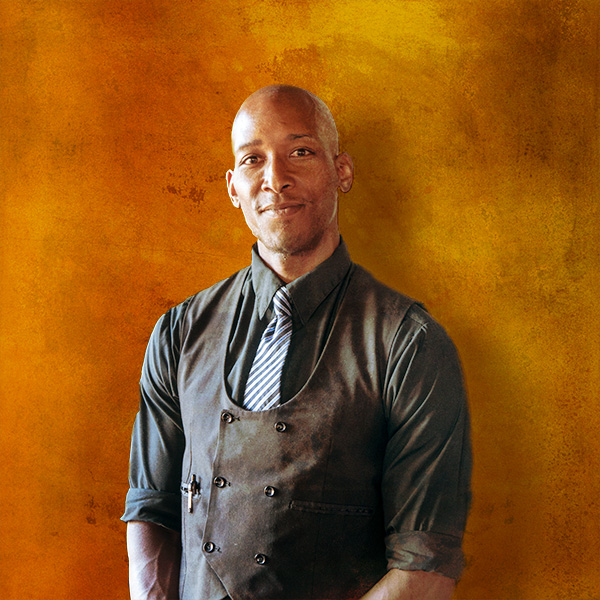
by successfulbob | Lumix LX100, people photography, photography, photography creativity, photography gear
Looking for Shadows
In photography, you will often hear people exhorting you to ‘Look for the Light’! I don’t know how many times I heard and read that during my learning process over the years. I believe that my photography leaped forward when I first heard ‘Look for the Shadows.’ When I started looking for and shooting into, the shadows I saw a marked difference in the depth and dimension of my photographs.
Look for the shadows has become my watchword. Shadows are what make or break an image. If you are walking along and you see harsh shadows being cast by the trees and shrubs and you decide to put your subject in that same light, you will get harsh shadows. Seeing little pockets of soft shadows and using these areas will make for less contrast in your images. To me, soft shadow edge transitions lend beauty and form to a subject being placed on a two-dimensional surface that you want to read as three dimensions.
That being said I am always watching how the light and shadows interact which brings me to today’s post. We were out to dinner at my wife’s favorite restaurant J Wine Bistro in the VOC Sedona, AZ. I noticed the waiter Ray and saw the split light on his face from the light beside the front door of the restaurant. I asked Ray when he had a moment if he would strike a quick pose for me.
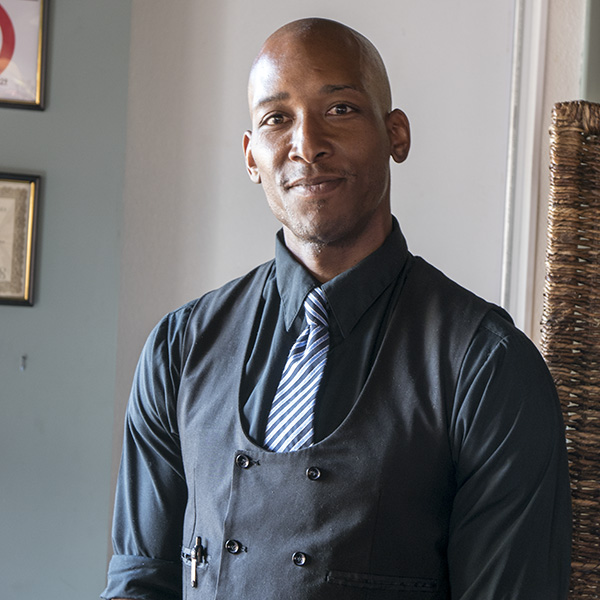 Ray with split light.
Ray with split light.
While I enjoyed the light shaping Ray’s face, I wasn’t thrilled with the background as you might imagine. So let’s play! I extracted Ray from the environment and went to work.
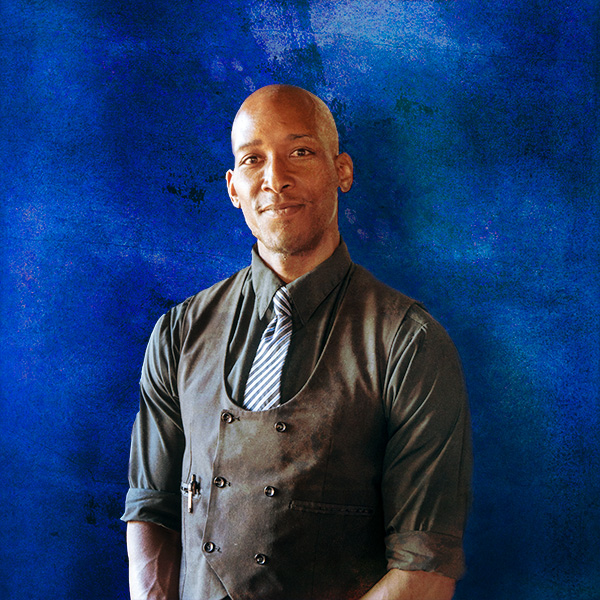 After extraction and some added texture and background.
After extraction and some added texture and background.
 A slight change in layer positioning adds a whole new color palette and feel to the image.
A slight change in layer positioning adds a whole new color palette and feel to the image.
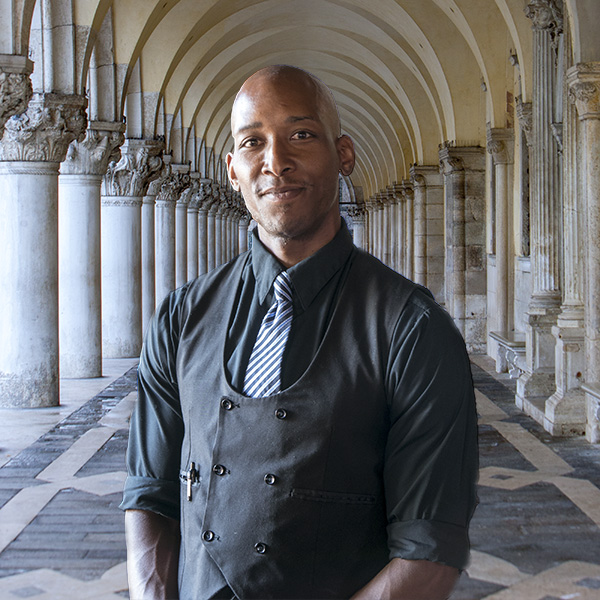 Last I thought I’d see how Ray liked being in Italy.
Last I thought I’d see how Ray liked being in Italy.
The original image was captured with what I call the professional photographer’s point and shoot. It’s the Lumix LX100. The LX100 is a nice handy camera that can fit in a large pocket. It has a fixed lens with fast f1.7-2.8 Leica glass and a decent zoom range of 24-72mm.
Yours in Creative Photography, Bob

by successfulbob | 6K photo mode, flower photography, LumixGH5, photography creativity, photography gear
Post Focus Photo Mode – Lumix GH5 Part Two
Let’s look at some more examples of using the Post Focus Photo Mode (see part one here).
 The focus is all throughout the image. Detail works in this case.
The focus is all throughout the image. Detail works in this case.
 With the post focus mode used to capture this image there is still a soft bokeh even though the camera used every focus point in the processing. But because the background is so far in the distance the background stays very soft and all the flowers are super sharp.
With the post focus mode used to capture this image there is still a soft bokeh even though the camera used every focus point in the processing. But because the background is so far in the distance the background stays very soft and all the flowers are super sharp.
I’ve been testing the Lumix GH5 and the Post Focus Mode in which the camera leverages a 6K Photo Mode wherein the camera creates a short video clip using all two-hundred and twenty-five focus points. Any one of these points can be pulled as an eighteen MegaPixel file. Or a range of images choosing a set of focus points. Or even better, it will combine all of the focus points into a fully focus stacked final image. This is an amazing technology to secure a look that is not possible in a regular capture with a camera. I love leveraging this tech to create artistic images.
Yours in Creative Photography, Bob
Save
Save
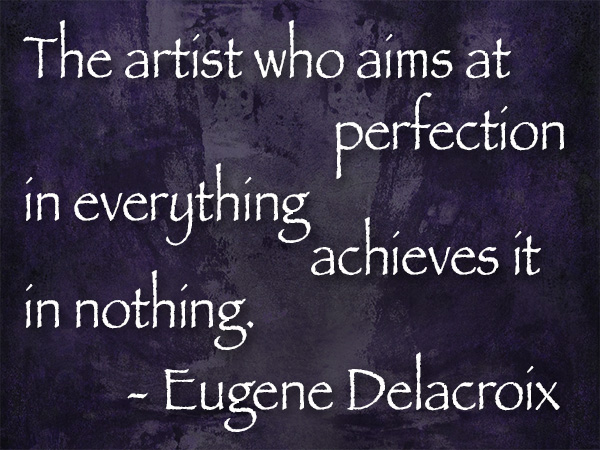
by successfulbob | photography - art quote
Sunday Photo/Art Quote – Eugene Delacroix
Perfection is the enemy of creation.
 “The artist who aims at perfection in everything achieves it in nothing.” – Eugene Delacroix
“The artist who aims at perfection in everything achieves it in nothing.” – Eugene Delacroix
That said, one needs to have a solid grasp of the technology and science behind the capture of the image. The more one understands the science and how the film or chip receives information the easier it becomes to stretch and push creative boundaries. Not to mention the post-production capabilities in manipulating the information captured after the fact.
It’s a great time to be a creative in the photography industry. I am going to start using the terminology I first heard from Julianne Kost that helps describe what I feel I do now.
“Lens Based Artist.”
Your thoughts requested and encouraged.
Yours in Creative Photography, Bob

 Helping Hand Graphic – Bob Coates Photography
Helping Hand Graphic – Bob Coates Photography Skip Cohen has been involved in the photographic industry his entire career and previously served as President of Rangefinder/WPPI and earlier, Hasselblad USA. He founded SkipCohenUniversity.com in 2013. Skip is a co-host for “Mind Your Own Business” and “Beyond Technique,” webcasts through Photofocus.com, writes for several publications including Shutter Magazine and is actively involved in several advisory boards for non-profit organizations.
Skip Cohen has been involved in the photographic industry his entire career and previously served as President of Rangefinder/WPPI and earlier, Hasselblad USA. He founded SkipCohenUniversity.com in 2013. Skip is a co-host for “Mind Your Own Business” and “Beyond Technique,” webcasts through Photofocus.com, writes for several publications including Shutter Magazine and is actively involved in several advisory boards for non-profit organizations.












